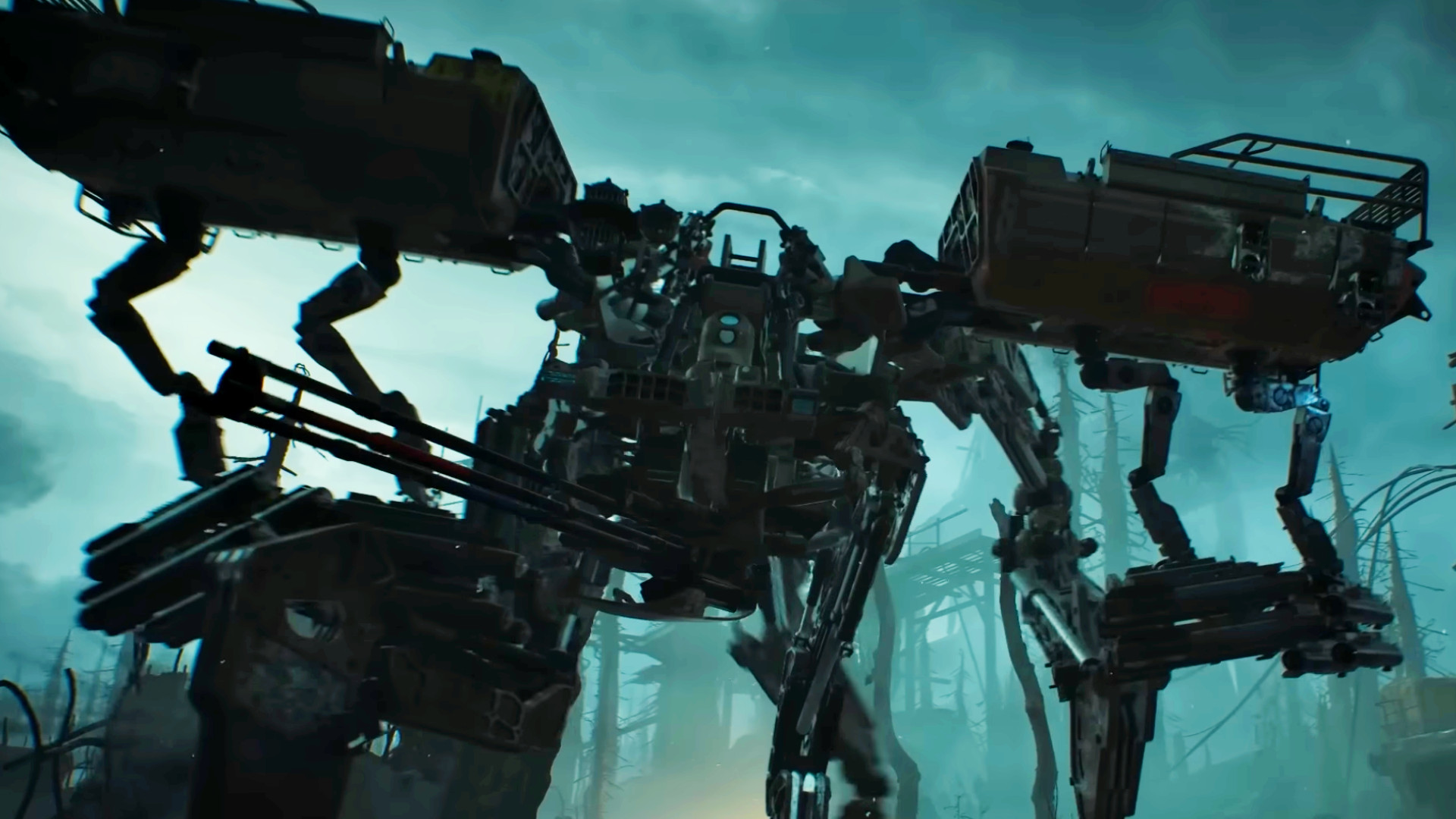As terrifying as they can be when things go wrong, survival games such as Valheim, Once Human, and Sons of the Forest have an underlying goofiness to them that keeps things light. Project Zomboid is more oppressive, at times relentless in its pressure, while Escape From Tarkov threatens you with the ever-present fear of a bullet from the shadows. Of late, however, I’ve had a particular penchant for The Forever Winter. Its grimdark, future sci-fi world is an unforgiving, hostile place as you claw for scraps in the shadow of giant mechs tearing the landscape apart for their respective megacorporations. Now, Fun Dog’s July update delivers a new broken cityscape to explore, along with its most horrifying foe to date.
The Forever Winter July update adds a lot of new features to the table, as developer Fun Dog continues to hone its promising-but-flawed creation into what could become one of our best survival games. The impressive worldbuilding and atmosphere was hampered at its early-access launch by bugs, clunkiness, balance issues, and a general feeling that it was a little undercooked. As we near the one-year mark, however, regular updates have continued to hone and refine it, and this new patch includes further, fundamental changes to movement and game feel.

Fun Dog has improved the sense of character, rig, and gear weight, fine-tuned movement and acceleration/deceleration speeds, and tweaked jumping to feel more natural. Adjustments to reload rates will “allow for much smoother ‘fire, reload, fire’ gameplay,” and small arms such as pistols now equip far faster than their larger counterparts, allowing you to respond to situations quickly. Gaz would be proud. Target marking has been made more precise, and there’s also the new ability to mash buttons to speed up mantling, climbing, or getting back up when knocked down.
The ruined city of Lost Angels is now available to explore, along with a fresh crop of region-specific quests. It promises to be a valuable source of supplies, but you’ll need to watch your corners, as you aren’t the only one roaming the streets. What has me most afraid, however, is the arrival of Stiltwalker 1.0, Europa’s “multi-legged destruction machine.” Perhaps it’s the spider-like movements, or maybe it’s the combination of direct-fire missiles, guided ATGM munitions that can home in to obliterate any foe, and a point-defense system that keeps it safe from incoming explosives, but the mere sight of this thing strikes fear into my heart.
Alongside this comes some additional weapon customization options, with several guns being equipped with new hardguards and the ability to attach the likes of flashlights. Among the smaller but still significant tweaks, enemy soldiers will no longer take random ‘pot shots’ at targets they shouldn’t be aware of; squads will better spread out in an attempt to surround suspected threats; recruits have been made more responsive to your commands; and larger enemies can now be briefly stunned if you manage to hit them hard enough. Fun Dog has also continued to work on performance improvements and optimization.
The Forever Winter July update is out now. You can read through the full patch notes courtesy of Fun Dog Studios. “Note the file size on this update is fairly large,” it warns, “thanks for tolerating that and we are working on cutting this down in future updates.”
Looking for more of the best co-op games for you and your friends to enjoy together? We’ve rounded up our top picks for 2025, along with a guide to the best gaming headset for PC to make sure your communication sounds crystal clear.
You can follow us on Google News for daily PC games news, reviews, and guides. We’ve also got a vibrant community Discord server, where you can chat about this story with members of the team and fellow readers.

